By Roberto Motta
Photo courtesy by Peugeot Sport
It’s been over 100 years since the epic victory at the Indy 500, and 25 years after the first victory at Pikes Peak. Now Peugeot returns to Colorado with only one goal: to win the famous Pikes Peak event once again. Previously, we described the new Mountain car. Here, we will put this in perspective and review the previous two wins at Pikes Peak.
Peugeot has always been a vanguard of automotive research and technical progress. In 1913, they scored their first victory in the ‘Indy 500’ with a futuristic car: the L76 Grand Prix. The L76 was one of the most advanced cars of its era, using a revolutionary engine with double overhead camshafts, four valves per cylinder and hemispherical combustion chambers with a central spark plug location.
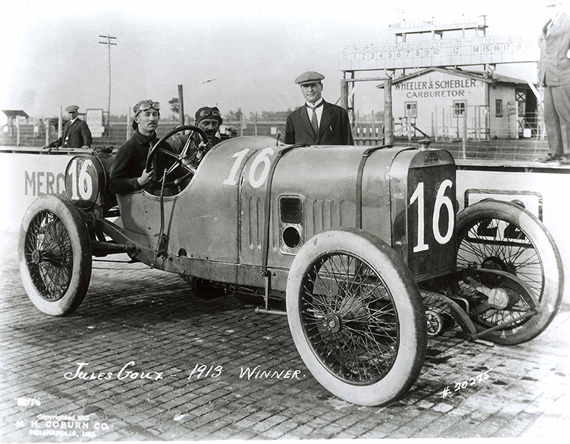
Jules Goux in the Number 16 Peugeot at Indy. Peugeot Grand Prix cars won Indy in 1913, 1916 and 1919. Photo Courtesy Indianapolis Motor Speedwas (IMS)
Moreover, in a period in which all manufacturers used huge displacements of over twelve liters, the Peugeot engine was only 7.6 liters which allowed them to reduce consumption and, at the same time, deliver a higher specific power per liter. The historic victory of the L76 became the stimulus for the birth of the legendary Offenhauser 4-cylinder engine, which remained competitive at Indy until the mid-60s.
This year to commemorate the historic victory at Indy, and to support the sales of its vehicles in an increasingly globalized market, Peugeot decided to deploy the 208 T16 prototype in the International Pikes Peak Hillclimb.
While waiting to witness the adventure of the 208 T16 and Rally Champion Sebastian Loeb, VeloceToday offers a brief history and some technical notes of the first 405 and 205 T16s, winners of the Pikes Peak events in 1988 with Ari Vatanen and 1989 with Bobby Unser.
1987 Peugeot leaves the rally to meet new challenges
The Pikes Peak adventure began with the small 205 T16. After the serious accident that killed Lancia S4 driver Henri Toivonen and his co-driver Sergio Cresto in 1986, the FIA changed the rules to reduce the power and speed of the cars. Already having proven its point, Peugeot decided to leave the world of rallying to participate in competitions that allow the participation of prototype cars such as the Paris-Dakar and Pikes Peak.
Technically, the 205 T16 car was very similar to that used in the WRC; tubular chassis, rear engine, all-wheel-drive and turbocompressor. The engine was a 4-cylinder in-line 1,775 cc (bore 83mm, stroke 82 mm) called XU8T, and centrally cross-mounted with a backward tilt of 20 °. It was all-aluminum, with a wet sump lubrication system, 4 valves per cylinder, supercharged with a Garrett turbocharger and Bosch K-Jetronic fuel injection, and delivered 550 hp.
A ‘Type TJ’ 5-speed gearbox mated to a Ferguson limited slip differential. The ‘205 T16 Pikes Peak ‘, which had a wheelbase of only 2540 mm, was too nervous, and failed to beat the stratospheric Audi Quattro Sport and settled for 2nd place in the final standings in the 1987 event.
1988 Here comes the 405 T16 Pikes Peak
For 1988 Peugeot decided to develop a specific version derived from the 405 turbo 16 and built two new cars. The 405 T16 Pikes Peak was a real prototype, with the structure composed of a central cell made of aluminum panels, connected to a tubular structures that supported the mechanics. The body was carbon fiber and Kevlar, and equipped with enormous wing appendages able to provide the maximum aerodynamic load at speeds between 100 and 180 km / h.
The heart of the 405 T16, the XU9T engine, was and centrally mounted transversely and inclined rearwards by 20 °. Derived from the previous XU8T, the new engine had a displacement of 1905cc, with a bore and stroke of 83mm and 88mm. To improve the cooling of the air of the combustion chambers, and increase reliability and power, the engine used a system of electronic fuel injection, ignition and the injection of a small amount of water in the fuel.
With a boost pressure of 3 bar, the engine delivered about 600 CV, which decreases power, due to the rarefaction of the air, to about 520cv when the car arrived at maximum altitude.
The transmission was integral with a viscous center differential that distributed 2/3 of the power to the rear and 1/3 to the front, connected to a 6 speed close-ratio and assisted by carbon clutch.
The 405 T16 adopted a wheelbase of 2888mm, a choice that when combined with the use of a system of four-wheel steering, made the car extremely effective.
Four Wheel Steering
The steering system is equipped with a rack with two pinions, one acting on the front axle, while the other acts on the rear wheels through a shaft that passes inside the cabin. The system allows the rear wheels to steer by 1 degree in the same direction of the front wheels when the steering wheel is rotated up to ¾ of its stroke. Then, by further rotating the steering wheel, the rear wheels turn 3 degrees in phase with the front.
This all creates a true spectacle and the 405 T16 sweep curves as if it were flattened to the ground. Ari Vatanen broke every record, finishing the climb with a time of 10’47 “22, which corresponded to an average of 110 km / h.
The great race of the 405 T16 Pikes Peak is well documented in a film made by Jean Louis Mourney and entitled ‘Climb Dance’.
The movie, now fully re-mastered is visible at this link:
http://www.youtube.com/watch?feature=player_embedded&v=-PZ5J3GLSYI #!
Master of the Hill Masters the Peugeot
In 1989, the Peugeot repeated the victory in the hands of Bobby Unser. After this enterprise, the 405 T16 Pikes Peak was abandoned, occasionally participating in some exhibitions devoted to vintage cars.
Back to the Future: June 2013
On June 8, 2013, the 208 T16 Pikes Peak and Sébastien Loeb attended the first qualifying session of the famous Pikes Peak at the Colorado Springs Speedway. The tests were carried out smoothly under the watchful eye of Peugeot Sport’s Director Bruno Famin. On the mountain itself, Loeb quickly gained the fastest time, followed closely by last year’s winner Rhys Millen.
Although not all competitors were present at the time of the test, the test session served to kick off the coming competition. We are all curious to see if, June 30 will be the Big Day, and if Sébastien Loeb and Peugeot will be crowned ‘King of the Peak’!
IL LEONE TRA LE NUVOLE: LA PEUGEOT ALLA PIKES PEAK
By Roberto Motta
Photo courtesy by Peugeot Sport
A 100 anni dall’epica vittoria nella Indy 500, e a 25 anni dalla vittoria nella Pikes Peak, la Peugeot torna in Colorado con un solo obiettivo: vincere!
La Peugeot è da sempre simbolo della ricerca e del progresso tecnico automobilistico, e a testimoniare quanto detto, basta ricordare che nell’ormai lontano 1913 la Casa Francese conquista la sua prima vittoria nella ‘Indy 500’ con una vettura avveniristica: la L76 Grand Prix’. La L76 è una delle vetture più avanzate del suo periodo ed è la prima vettura al mondo ha sfruttare un rivoluzionario propulsore con distribuzione bialbero a 4 valvole per cilindro e cielo delle camere di combustione emisferiche con alloggiamento centrale per la candela.
Inoltre, in un periodo in cui tutti i costruttori utilizzano propulsori di cilindrata sempre maggiore (fino a 12litri), la Peugeot realizza un quadricilindrico con una cilindrata di ‘soli’ 7,6 litri. Scelta che consente di contenere i consumi e, nello stesso tempo, erogare una potenza specifica maggiore dei propulsori addottati dalla concorrenza.
E’ interessante ricordare che la storica vittoria della L76 diventa lo stimolo per la nascita del leggendario propulsore 4 cilindri Offenhauser, che viene progettato proprio prendendo spunto dal ‘Twin camshaft 4-cylinder’ Peugeot, diventando uno dei propulsori più longevi della storia automobilistica sportive, rimanendo competitivo fino alla metà degli anni ’60.
Per ricordare la storica vittoria a Indy, e per supportare le vendite delle proprie vetture in un mercato sempre più ‘globale’, la Casa del Leone ha deciso di schierare un prototipo nella ‘Internation Pikes Peak Climb’: la ‘208 T16 Pikes Peak’.
Per la Casa Francese non è un debutto, ma ben sì un ritorno, dato che alcune delle sue vetture hanno già corso e vinto questa incredibile cronoscalata.
Come la maggior parte degli appassionati, anche chi scrive queste righe attende con ansia di vedere in gara la nuova ‘208 T16 Pikes Peak’ e, soprattutto, di vedere ancora una volta in azione ‘l’alieno’ Sébastien Loeb.
Nell’attesa di assistere all’avventura della 208 T16 e di Loeb, VT vi propone una breve storia e alcune curiosità tecniche della debuttante 205 T16 e della successiva 405 T16, vincitrice delle edizioni del 1988, con Ari Vatanen, e del 1989, con Roby Unser.
La Peugeot lascia i rally per affrontare nuove sfide
L’avventura della Casa del Leone nella celebre cronoscalata Americana inizia con la piccola ‘205 T16’, quando, ala fine del 1986, dopo il grave incidente in cui perdono la vita il pilota della Lancia S4 Henri Toivonen e il suo copilota, Sergio Cresto, la FIA cancella il campionato riservato alle vetture Gr.B. In questo periodo la Peugeot, è protagonista nel Mondiale Rally proprio con la ‘205 T16’ e, non condividendo le scelte della Federazione Sportiva che, in funzione di una maggior sicurezza, mirano a imbrigliare la potenza dei propulsori e ridurre le libertà progettuali dei tecnici, decide di abbandonare il mondo dei rally per partecipare a competizioni che consentono la partecipazione di vetture prototipo.
La Casa francese dirige quindi i suoi sforzi nei Rally-Raid, come la Paris-Dakar, gara che domina nella seconda parte degli anni ‘80, e nella famosa cronoscalata Americana del Pikes Peak.
Tecnicamente la vettura Francese è molto simile a quella utilizzata nei grandi Raid; telaio tubolare, trazione integrale e motore turbocompresso.Tuttavia, la sua tecnica è esasperata in funzione del percorso caratteristico della Pikes Peak che, in 19.8 km di pista, comprende ben 156 curve e un arrivo in quota ad oltre 4000 mt.
Il cuore della 205 T16, è il propulsore a 4 cilindri in linea di 1775 cc (alesaggio 83mm, corsa 82 mm) denominato XU8T, e montato in posizione centrale trasversale con una inclinazione all’indietro di 20°.
L’XUT8 è completamente in alluminio, dotato di un sistema di lubrificazione a carter umido, distribuzione a 4 valvole per cilindro, è sovralimentato con un turbocompressore Garett e, alimentato con un’iniezione Bosch K-Jetronic, eroga una potenza di circa 550 cv.
La trasmissione, è del tipo integrale permanente e sfrutta un cambio ‘Type TJ’ a 5 marce + RM e differenziale autobloccante Ferguson.
La ‘205 T16 Pikes Peak’, che ha un passo di soli 2540 mm, è troppo nervosa, e impegna molto i piloti che non riescono a sfruttare tutte le sue potenzialità e, proprio per questo motivo, non riesce battere la stratosferica “ Audi Quattro Sport”, accontentandosi del 2 posto della classifica finale.
Arriva la 405 T16 Pikes Peak
Per il 1988 la Peugeot decide di sviluppare una versione specifica derivata dalla ‘405 turbo16 Grand Raid’ e costruisce due nuove vetture.
La ‘405 T16 Pikes Peak’ è un vero prototipo, con la struttura composta da una cellula centrale realizzata in pannelli di alluminio, alla quale sono vincolate, sia sull’anteriore che sul posteriore, una struttura tubolare che sorreggono la meccanica. La carrozzeria è in fibra di carbonio e Kevlar, ed è dotata di enormi appendici alari in grado di fornire il massimo carico aerodinamico a velocità comprese tra i 100 e i 180 km/h.
Il cuore della 405 T16, e il propulsore XU9T che, come nella precedente 205, è montato in posizione centrale trasversale, e inclinato all’indietro di 20°.
Derivato dal precedente XU8T, il nuovo propulsore ha una cilindrata di 1905cc, ottenuta accoppiando misure di alesaggio e corsa rispettivamente di 83mm e 88mm.
Per migliorare il raffreddamento del cielo delle camere di combustione, e aumentare affidabilità e potenza, il propulsore sfrutta un sistema di iniezione elettronica Marelli, e un’accensione integrale Thomson che consente di iniettare una piccola quantità di acqua nel carburante (nell’ordine del 10%).
Con una pressione di sovralimentazione di 3 bar, il propulsore eroga circa 600 CV, potenza che diminuisce, a causa della rarefazione dell’aria, a circa 520cv quando la vettura arriva in quota.
La trasmissione è integrale con un differenziale centrale viscoso che distribuisce la potenza 2/3 al posteriore e 1/3 all’anteriore. Il cambio, ‘Type TJ’ ha sei marce con rapporti ravvicinati ed è assistito da frizione in carbonio.
La 405 T16 adotta un passo di 2888mm, scelta che, abbinata all’utilizzo di un sistema di sterzo integrale, rende la vettura estremamente efficace.
Il sistema di sterzo integrale è dotato di una cremagliera con due pignoni: uno agisce sull’avantreno, mentre l’altro agisce sulle ruote posteriori mediante un albero che passa all’interno dell’abitacolo. Il sistema consente alle ruote posteriori di sterzare di 1° nella stessa direzione di quelle anteriori, quando il volante è ruotato sino a ¾ della sua corsa. Poi, ruotando ulteriormente il volante, le ruote posteriori sterzano di 3° in controfase con l’avantreno.
La gara è un vero spettacolo, e la 405 T16 pennella le curve come fosse schiacciata al suolo e consente ad Ari Vatanen di rompere ogni record, concludendo la scalata con il tempo di 10’47”22, che corrisponde a una media di 110 km/h.
La splendida gara della 405 T16 Pikes Peak è ben documentata in un filmato realizzato da Jean Louis Mourney e intitolato ‘Climb Dance’.
Il filmato, ora totalmente rimasterizzato è visibile al link
Nel 1989, la Peugeot bissa la vittoria nelle mani del pilota Statunitense Robby Unser. Dopo quest’ultima impresa, la 405 T16 Pikes Peak è abbandonata, per tornare a ammagliare gli appassionati solo in alcune esibizioni dedicate alle auto storiche.
Dopo 25 anni, la Peugeot ritorna negli USA per onorare il centenario dalla vittoria di Indy, e la prima vittoria della 405 T16. La Casa Francese schiererà la ‘208 T16 Pikes Peak’ nella categoria ‘Unlimited’, con il numero di gara 208. Condotta in gara dal 9 volte campione Mondiale Rally Sébastien Loeb, la 208 T16 Pikes Peak ha un solo obiettivo: vincere!


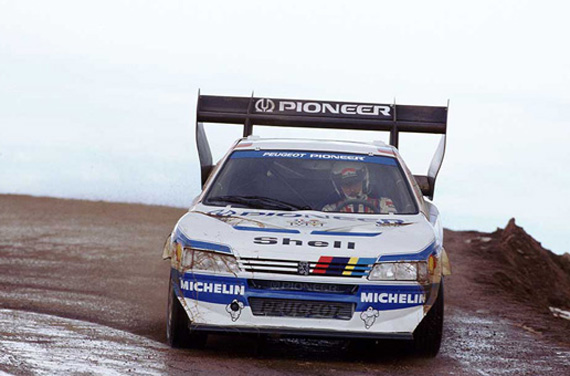

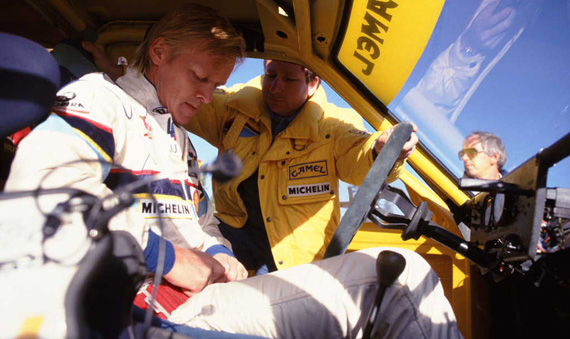
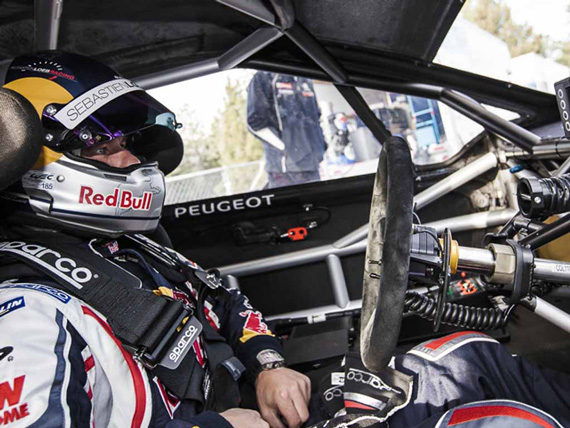
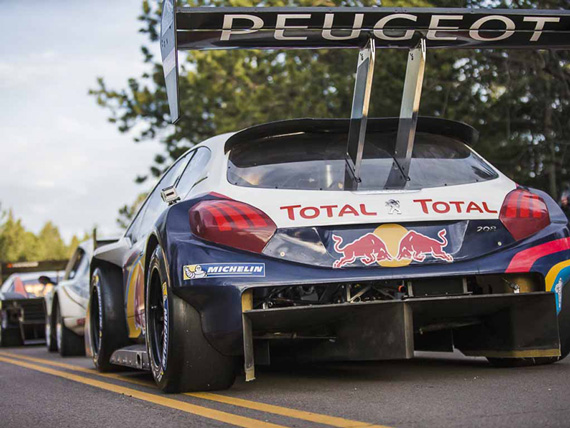

Photo above incorrectly identifies Vatanen as being in the 405 T16, whereas it is actually the cockpit of the 205 T16. An minor, but obvious oversight.
Can’t wait for to see Loeb on the Pike.
Now there is a sharp reader! Francis is correct, and the caption has been changed.
I’ll be there this year at last!
Mitsubishi is flying me over to cover their electric car race. Needless to say, I’m very excited!
Why have the Finns produced so many great rally and race drivers?